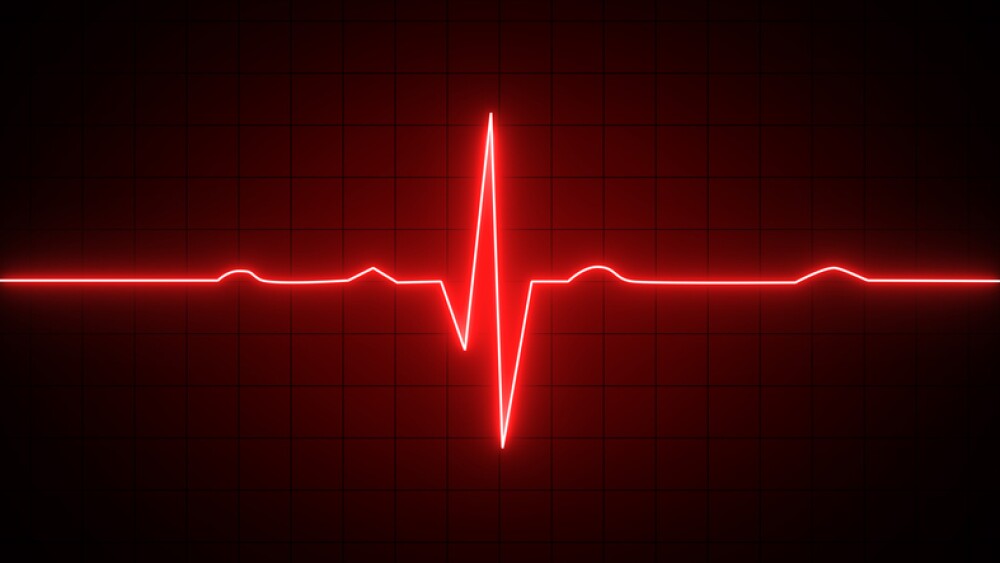Capricor Therapeutics met with the FDA last week for a type A meeting, during which CEO Linda Marbán aimed to explain to the regulator that it got it wrong. Capricor plans to resubmit the application based on deramiocel’s existing dataset.
After being hit last month with a complete response letter for its investigational cell therapy deramiocel, which it is developing for cardiomyopathy associated with Duchenne muscular dystrophy, Capricor Therapeutics will resubmit. While CEO Linda Marbán was optimistic about the company’s chances of fighting the rejection after the sudden departure of Center for Biologics Evaluation and Research Head Vinay Prasad late last month, his even more stunning return 10 days later adds yet another layer to the biotech’s story.
“My initial reaction [to Prasad’s return] was of great surprise,” Marbán told BioSpace. “It was pretty clear that he was asked to leave . . . But I think what it showed is that [FDA Commissioner Marty] Makary has tremendous faith in him. We all understand the ramifications of that, that there’s not a lot of ladders you can go up besides the Prasad ladder.”
Deramiocel’s regulatory path over the past month has been filled with unexpected detours. The rejection itself came as a shock to those involved, and this followed the abrupt cancellation of an advisory committee meeting for the drug—allegedly at the behest of Prasad.
“We believe we consistently met the agency’s expectations throughout the review process,” Marbán said during the company’s second quarter earnings call on Aug. 11. “The complete response letter was unexpected given the trajectory of positive interactions [with the FDA].”
Craig McDonald, director of the MDA Neuromuscular Disease Clinics at UC Davis and lead investigator on Capricor’s HOPE-2 and HOPE-3 trials, agreed. “The previous leadership in the FDA really found the data quite compelling and encouraged the BLA submission,” he told BioSpace last month.
Capricor itself learned of the adcomm’s cancelation through non-official channels, Marbán previously told BioSpace. The meeting, which had been scheduled to take place on July 30, was listed on the Federal Register—then, suddenly, it wasn’t. Marbán was blindsided.
“Investors watch these boards all day, every day, so my phone started blowing up with ‘your adcomm has been canceled. It’s been taken down. Why?’ I had no answers to give,” she said. “I couldn’t make an official statement.”
It appears that Capricor and deramiocel may have been caught up in an internal battle between Prasad and two individuals at the FDA’s Office of Therapeutic Products. Nicole Verdun, the former director, and her deputy, Rachael Anatol, who were pushed out of the agency in June, were allegedly “put on administrative leave because of an argument about our file, and that Prasad wanted to CRL us and Nicole was fighting it,” Marbán recounted hearing from a STAT reporter who’d contacted her after receiving a tip from an agency insider.
Fast-forward to July 30. Prasad had exited the FDA the previous evening under unclear circumstances, and Marbán told BioSpace she was optimistic about the candidate’s chances. “I certainly feel like we have a good opportunity now,” she said. “I don’t know how he felt about our data because the problem with Prasad was that he was very uncommunicative.”
Nine days later, of course, Prasad was back in his position as CBER chief, and Capricor stock, which had popped 9% on the Aug. 8 announcement of an upcoming Type A meeting with the FDA for deramiocel, saw that same 9% wiped out just two days later.
Marbán had been hopeful that Prasad would attend the Type A meeting, which was held on Aug. 13, “so that we could actually talk to him in person, but he did not show up,” she said. “We’ve never had any direct communication from or with him. We would like that very much, but nothing so far.”
Best Laid Plans
In its Q2 press release, Capricor stated plans to resubmit the BLA based on deramiocel’s existing dataset, with data from the Phase III HOPE-3 trial—which are expected in the fourth quarter—potentially serving as supportive and confirmatory evidence, based on regulatory guidance.
On the company’s Q2 earnings call, an H.C. Wainwright analyst asked Marbán what she expected could be different about the outcome, given Capricor is submitting the same data.
“We didn’t feel that the CRL was founded,” Marbán replied. “The data that we submitted was exactly what they asked for, and the graphs themselves are interpretable as statistically and clinically significant. . . . Our number one goal is . . . explaining to them why perhaps their interpretation was wrong.”
Marbán additionally shared on the call that in Capricor’s pre-BLA meeting last August, the biotech requested to switch the primary efficacy endpoint of the HOPE-3 trial to left ventricular ejection fraction (LVEF) from change from baseline in upper limb function. The FDA instead encouraged Capricor to submit its application based on currently available data from the Phase II HOPE-2 trial and HOPE-2 open-label extension (OLE) trials matched to an external Natural History comparator, with the Phase III data potentially supporting a future label expansion. “This became the plan that we implemented,” she said.
Capricor has now submitted a protocol amendment to designate LVEF as the primary efficacy endpoint for HOPE-3, with performance of the upper limb as a pre-specified secondary endpoint.
This change is based on multiple factors, Marbán said on the call, including the objectivity of LVEF as measured by MRI and “the relevance of left ventricular ejection fraction to the pathophysiology of DMD cardiomyopathy,” elucidated by a recently published study. Before this breakthrough by Vanderbilt University’s Jonathan Soslow, there were no established efficacy benchmarks in DMD cardiomyopathy for the FDA to use in defining clinical benefit, Marbán said.
“Our entire regulatory path, including the current BLA, was built on the FDA’s guidance on how efficacy should be defined in this patient population.”
A Roadmap Forward
Ahead of the Type A meeting, Capricor submitted what Marbán called a “comprehensive briefing package,” addressing the concerns raised by the FDA in the CRL, and outlining several potential paths to approval for deramiocel. Among these, the CEO prioritized “the continued review of our previously filed BLA, which we believe meets the applicable regulatory requirements for approval.”
Data from HOPE-2, published in May 2020, showed significant improvements in upper-limb strength and performance in patients treated with deramiocel. OLE data published in June 2024 demonstrated that the cell therapy could maintain these upper limb benefits beyond three years of treatment. At this time point, deramiocel also stabilized LVEF, indicating it could preserve heart function in DMD patients.
“It was certainly the feeling by Capricor physician scientists in the space that this was really the first therapeutic that’s really been shown to stabilize the cardiomyopathy,” McDonald said.
During the Q&A session of Capricor’s earnings call, an Oppenheimer analyst called out the proverbial elephant in the room: “With Vinay Prasad now back at CBER, does that inform your thinking?”
It turns out, this was a question Marbán had given a lot of thought. “The last few years . . . people have become much more focused on who the review team is and exercising political capital and regulatory flexibility and all of this lingo that has become very popular,” she said. “I’m going back to old school. We have good clinical data; we have great safety data. We have guidance from the agency in writing as to what they wanted. We provided it. And now, really, I think it’s up to them to decide who is best suited within that agency to make the decision of adjudication.”
While treatments like Sarepta’s gene therapy Elevidys and exon skippers in development by Dyne Therapeutics, Avidity Biosciences and more, have gotten the lion’s share of attention for their potential to improve muscle function in DMD patients, both Marbán and McDonald emphasized the importance of treating the disease’s cardiac manifestations.
“The cardiomyopathy is what typically takes [a patient’s] life. It’s the number one cause of loss of life in Duchenne’s at this point, and we have the only possibly approved therapeutic to treat that life-taking indication,” Marbán said.
Cardiac MRI data from deramiocel’s OLE trials “showed complete stabilization of the cardiomyopathy,” McDonald added. “So if anything, I think it’s more of a safety issue to not provide early access to these patients who have unrelenting and progressive cardiomyopathy.”
Capricor expects to receive minutes from the Type A meeting by mid-September. At that point, “We’ll have some clarity,” Marbán said. “I don’t know if it’ll be full clarity, but it definitely will be at least a roadmap forward.”






